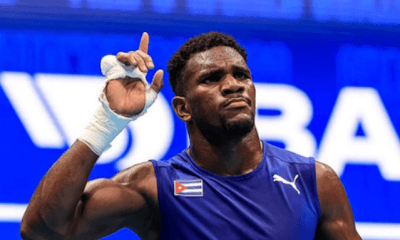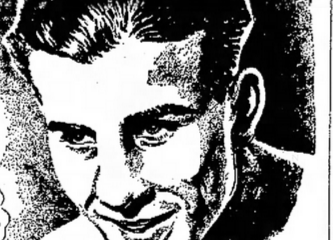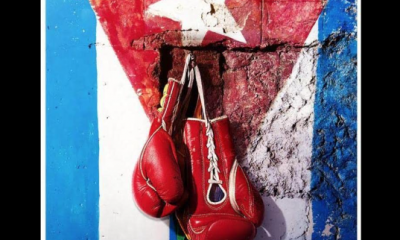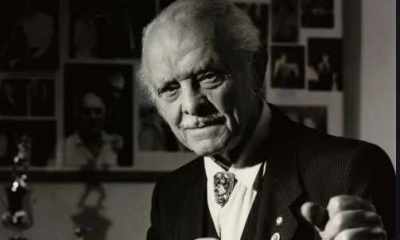Canada and USA
Kid Chocolate²

Kid Chocolate – New York has fallen in love with Kid Chocolate all over again.
New York. He came with the heat in the summer of 1928. Wide-eyed and whippet-thin in the big city of dreams, he was wearing the only suit he owned. Six dollars and a one-way ticket stub from Cuba were in his pocket. His name was Eligio Sardiñas Montalvo.
He went straight to work fighting for chump change in smoky clubs in Mineola and Brooklyn. But he made gloomy faces light up, and word travelled about the eighteen-year-old phenomenon tearing up the locals. Soon the clubs were packed and ringside cynics were raising eyebrows. Damon Runyon called him a “stick o’ licorice,” others “the Cuban Bon-Bon,” though his official nom de guerre was “Kid Chocolate.” His style of fighting was something to behold; something new, something old. It brought a sweet whiff of nostalgia.
It was no coincidence.
Eligio was a barefoot newsboy in Havana after Jess Willard knocked out Jack Johnson and set off a boxing craze in Cuba that hasn’t ended. It was said that he learned how to box by sneaking into bouts featuring Jack Britton, Johnny Dundee, and Young Wallace —all of whom fought in Havana during the 1920s. He’d sit mesmerized for hours in film houses as Joe Gans taught him how to jab and Jack Johnson taught him how to grab. His manager swore that his footwork was a mimic of no less than Benny Leonard.
“Boxing like a finished product of the old school,” read the aptly-named Painesville Telegraph one summer’s morning in 1929, “Kid Chocolate fought the nearest thing to a perfect fight. He hacked away at his iron-jawed opponent with left jabs and right crosses, made a mug of him at long range,” and flaunted the kind of timing and precision seen more in kitchens than in the swirling violence of prize rings.
In August, he thrashed top contender Al Singer at the Polo Grounds before fifty thousand, made a dollar for every seat filled, and became a sensation. Kid Chocolate was hot hot hot. In St. Louis, a teenage Henry Armstrong read a headline about the extravagant purse he earned for one night’s work and said, “—That’s for me.” In 1932, eleven-year-old Ezzard Charles heard about the taffy-colored suits with trick cuts; and when that gaudy touring car rolled into Cincinnati, he said, “—That’s for me.”
But Kid Chocolate was more than the idol of black communities and the toast of New York City. He was an astonishing fighter who faced five Hall of Famers in a one-hundred forty-nine bout career that saw him seize the Jr. lightweight and featherweight crowns and become the first Cuban champion in history. He was almost too big to fail. Almost.
On November 24th 1933, he fought Tony Canzoneri at Madison Square Garden. His prime ended that night, and Canzoneri seemed to find it amusing —he was grinning as he punched, like a man possessed. Edward J. Neil said the Kid gasped after taking a shot to narrow ribs, and when another smashed into his jaw, his “long legs tangled all up as he floundered back into a neutral corner.” Dazed, he fought back with the ferocity of a dying god, and never saw the right hand that dropped him face-first to the canvas. He was counted out in the second round. Before the resin dust settled, the scribes said he was “headed for fistic oblivion.”
They were wrong. He was already immortal.
On the undercard that Friday night, a teenage lightweight called Cocoa Kid fought a six-rounder. His manager sought flashy coattails and tried to pass him off as Cuban, though he was of Puerto Rican descent. Eleven years later, Cocoa Kid would mentor an African American swarmer at Stillman’s Gym. The swarmer was billed as “Chocolate Kid of Cuba” for his first three fights, though his right name was Calvin Coolidge Lytle (alias Bert Lytell) and he was from Texas. In San Diego, on the same date that Canzoneri knocked out Kid Chocolate, a bantamweight calling himself “Kid Chocolate” fought a four-rounder. Three nights later, another fighter calling himself “Kid Chocolate” fought an eight-rounder—in Malaysia.
It was only the beginning. Over seventy more namesakes in ten divisions carried the name into the 1960s, and beyond.
…..
New York, again. Although he didn’t know it, middleweight Peter Quillin was following footsteps when he migrated to Manhattan in 2001. Eighteen and near-broke, the self-described Cubano de corazón from Grand Rapids, Michigan came for the same reason Eligio had seventy-three years earlier. He came seeking, he said, “changes for my life.” It wasn’t easy; no honest pursuit of glory can be. He worked at the International House of Pancakes, slept on a mattress found in the trash, and competed in New York Golden Gloves tournaments on an empty stomach.
But the heat was rising. In June 2005, Kid Chocolate came back.
Quillin, who had already adopted the moniker after trainers commented on his resemblance, turned professional. He went straight to work building a record only a stone’s throw from where a legend built his own record so long before. Quillin is familiar with the old fight films, and those well-timed hooks and uppercuts made an obvious imprint. The “flashy confidence” did too: The 21st century’s version of Kid Chocolate lights up opponents and then lights up gloomy faces with chocolate candies he tosses over the ropes after every victory.
Now fourth in the Transnational Boxing Rankings, Quillin is rising fast. He is 28-0 and is scheduled to fight in Brooklyn at the Barclay Arena on April 27th. When the original Kid Chocolate was 28-0, he too was rising fast. And he fought in Brooklyn, just four miles east at the Broadway Arena, on April 29th.
I called Quillin recently and told him about the strange parallels, about how history seems to be repeating. He found it a little startling, as did I, before recognizing how inspiring the past can be when its hand is on your shoulder. When I told him that his predecessor scored a first-round knockout for his 29th win, he heated up. “I’m going for it! You’ll see!” We will. We look forward to it.
Smoking isn’t allowed in arenas anymore, but the ringside cynics remain. And we’re still dazzled by Kid Chocolate’s style of fighting. It’s something to behold; something new, something old.
A sweet whiff of nostalgia.
A hand on a shoulder.
_________________________
Graphic is “Panorama” by Bobby Mikul.
Details regarding Kid Chocolate and his fights derived from Wilbur Wood’s interview with manager Pincho Gutierrez in the New York Sun as quoted by Bert Sugar in Boxing’s Greatest Fighters (2006); the Milwaukee Journal, 1/4/29; “Ez Story: Clothes Make the Man,” New York Times (6/15/54); “Tony Takes KO Over Chocolate” 11/25/33 by Herbert W. Barker (AP) and “Canzoneri Stops Chocolate in Second Round K.O” 11/25/33 by Edward J. Neil (AP). Henry Armstrong’s comment recorded in Peter Heller’s In This Corner (1994).
Special thanks to Peter “Kid Chocolate” Quillin for granting an interview for this essay.
Springs Toledo can be contacted at scalinatella@hotmail.com.
-

 Featured Articles3 weeks ago
Featured Articles3 weeks agoThe Hauser Report: Zayas-Garcia, Pacquiao, Usyk, and the NYSAC
-

 Featured Articles2 weeks ago
Featured Articles2 weeks agoOscar Duarte and Regis Prograis Prevail on an Action-Packed Fight Card in Chicago
-

 Featured Articles1 week ago
Featured Articles1 week agoThe Hauser Report: Cinematic and Literary Notes
-

 Book Review5 days ago
Book Review5 days agoMark Kriegel’s New Book About Mike Tyson is a Must-Read
-

 Featured Articles4 weeks ago
Featured Articles4 weeks agoManny Pacquiao and Mario Barrios Fight to a Draw; Fundora stops Tim Tszyu
-

 Featured Articles4 weeks ago
Featured Articles4 weeks agoArne’s Almanac: Pacquiao-Barrios Redux
-

 Featured Articles3 weeks ago
Featured Articles3 weeks agoRemembering Dwight Muhammad Qawi (1953-2025) and his Triumphant Return to Prison
-

 Featured Articles4 weeks ago
Featured Articles4 weeks agoOleksandr Usyk Continues to Amaze; KOs Daniel Dubois in 5 One-Sided Rounds





















